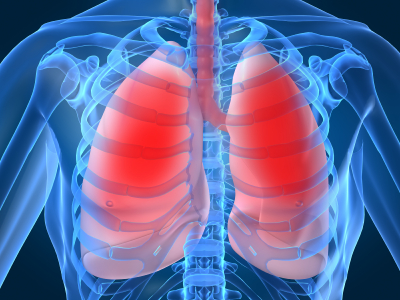Biologist (imaging)
 |
So, what do you do?
I head up a team and am in charge of the magnetic resonance imaging (MRI) unit. MRI is a technique that is used in hospitals on patients to visualise biological tissues and processes within the body without the use of surgery or X-rays. Since many mammals have very similar physiology to humans, we use imaging techniques on experimental animals to see how potential new drugs interact with tissues. It gives us an amazing insight into how these compounds work and how they might influence the disease process.
What does your typical day involve?
My team runs MRI scans on animal models. We believe that this can translate really well to human disease and we are looking at a couple of interesting compounds at the moment to see how they interact with the brain. The imaging of what they do in the brain is crucial to the development of drugs in a number of disease areas, eg. Alzheimer’s disease.
On a typical day I work on a computer a lot and have many discussions with the team about what’s going on, the current results, where these are taking us. I also spend a lot of time talking to external collaborators.
But it is not all deskwork and talking. I get involved with practical techniques too, some of our experiments take a long time to run, I like to work late whereas some of my team start early, so this really works well – that’s what teamwork’s about.
I also spend a fair bit of time writing scientific papers. My employer encourages publication - it raises the scientific profile of our work, it provides scientific peer review. Publishing data on our compounds is also essential if they are to become medicines. All this enhances the reputation of the work we are doing on the development of these exciting techniques. But of course there is a lot of work that may lead to a marketable drug that must be kept confidential, at least temporarily while patents are approved.
How long have you been in your current role?
Our first big magnet arrived on site in about 2002 and my unit grew from that point.
How has your career developed since you entered the industry?
I joined the company straight after I finished my PhD and worked on a number of projects. One of these was on inflammation and arthritis and we were looking for new and clever ways to see what was really happening in the joints. We explored and developed ways to use MRI to see how drugs affected the inflammation processes. I soon became the local MRI “expert” and an imaging unit was set up - and as I had all of this experience I was put in charge! In a way, my career happened by accident – but I had the initiative to take opportunities when I saw them.
Why did you decide on a career in the Pharmaceutical Industry?
After my PhD I really wanted to work in the pharmaceutical industry. I was attracted by the breadth of research involved and the crucial interactions between scientists, clinicians and even lawyers. This concept really stimulated me. I have never regretted my decision.
What qualifications and experience do you have?
At A-level I studied Chemistry, Biology and Physics – and then I didn’t know what I wanted to do. I applied for a few jobs with a science theme. I worked for about 2 years, but I was frustrated because I didn’t have the qualifications to pursue a career that I found satisfying.
So I decided to go to University and did a degree in physiology at Newcastle University– well it actually started out as psychology but a physiology module really got me excited so I switched courses. After my degree I stayed on at Newcastle and did a PhD on calcium metabolism. As part of my PhD research work I got interested by the biology of the hormone prolactin.
After my PhD I thought about doing postdoctoral research but also wrote to many pharmaceutical companies for jobs. I wrote a speculative letter to a contact I had at my current company and he asked me in for an interview because he was also interested in prolactin. It was someone I had got to know through networking whilst doing my PhD. Networking is so important to meet people and make contacts – in many ways it is what has directed the way my education and career has gone. Opportunities and new interests crop up when you talk to people and you just have to grasp those opportunities and make those speculative phone calls.
Do you work mostly on your own or as part of team?
It is mostly teamwork. The work we are doing within the imaging unit requires a broad range of skills and we all play a part.
What is it like socially where you work?
There are a lot of time pressures in the industry and sometimes the work-life balance is hard to get right. The work is totally fascinating and there are times when you feel like spending too much time at work and not enough with the family. There is a very good Sports & Social Club and many employees are members. The company has a good social atmosphere.
What are you most proud of in your career?
Doing a job that has never been boring!
It has been great publishing some good research papers that have added to general scientific knowledge. I also get great satisfaction when the team has done some really successful work. I have also been proud of supporting the careers of colleagues and helping them to develop their roles. There is also pride in being able to promote the pioneering work that the company is doing in the areas of imaging and drug discovery.
What possibilities are there for your career in the future?
Imaging is an ever developing field but I really hope that the team’s work will contribute something worthwhile to the world – it would be a great personal satisfaction to achieve this.
One of the things I hope that will happen is that we contribute significantly to the design of a clinical trial in patients. One of our studies has already stimulated similar imaging in healthy volunteers.
What do you think are the most important skills for someone in your role to have?
You need a good interest in the science – it has to be the primary interest. The job can be frustrating at times when things don’t go quite as you expect, but the science target really keeps you going.
I am a biologist, but there are a lot of engineering skills needed – it is a developing area and an entrepreneurial flair for assessing new ideas is important.
We all need communication skills for expressing results and their consequences. Other attributes are self-motivation, a pro-active approach to things and good inter-personal skills.
What one piece of advice would you give to someone seeking a career in the pharmaceutical industry?
Be an opportunist, be pro-active, seek out new areas. But be fascinated by drug discovery, science and the wealth of applications it has.
It is hard to get straight into imaging as it is a niche area. Most people have come in by various routes – through biological or clinical imaging research, or engineering and IT, or chemistry with a NMR spectroscopy specialism. They would normally have obtained their training via a PhD. They need to have done some appropriate postdoctoral work – and keep an eye out for the right opportunities. Although there are a few people in the area who don’t have a PhD, they do have a vast amount of experience and skills.
Case study
 I was not aware of medical writing as a career until I saw a job advertisement – then I immediately knew it was something I would enjoy.
I was not aware of medical writing as a career until I saw a job advertisement – then I immediately knew it was something I would enjoy.
